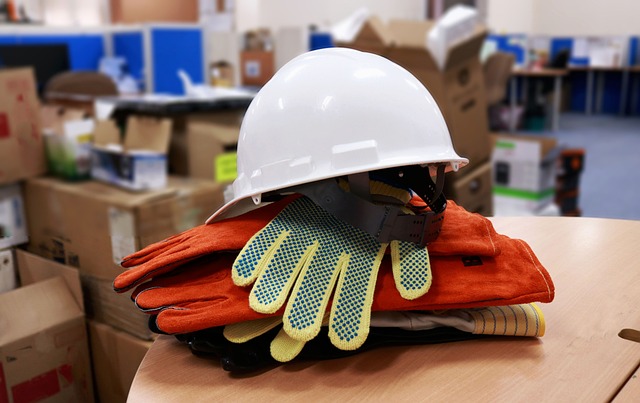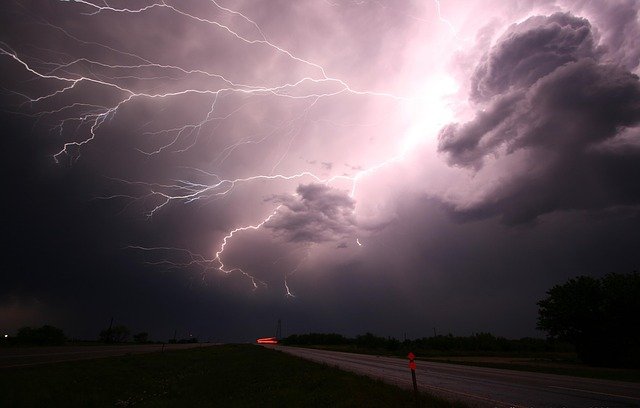Maliha Tahira*, Amatul Quddus Furqanab, Shahzaib Ahmadc, Sejal Lund d
a Tahir Heart Hospital, Chiniot
b Karachi Medical and Dental College, Karachi, Pakistan
c Mayo Hospital, Lahore, Pakistan
d Shaheed Mohtarma Benazir Bhutto Medical College, Karachi, Pakistan
ABSTRACT:
The occupational health and safety (OHS) conditions in Pakistan are below standard, compromising the health and quality of life of a considerable working population. Pakistan is a developing country and like many developing countries, occupational health and safety is of least priority with inadequate laws and their improper implementation. Every one in thirty-three employed persons in Pakistan report some type of occupational injury/disease that resulted in lost working hours or contact with a practitioner. Many studies have reported inadequate use of Personal Protective equipment (PPE), lack of awareness about the use of available PPE among workers, deficient general safety measures, and poor health conditions of the labor force in the country. Pakistan’s agriculture sector plays a central role in the country’s economy contributing 18.9% to its GDP and absorbing 42.3% of its labor force; majority of occupational health sufferers are farmers with many cases of respiratory related diseases. This review comprehends precise information about the current occupational health and safety situation in pakistan. This article could be a source in helping to set up regulations in order to spread awareness among workers and in strengthening OHS reforms as a result we will be able to provide ideal working conditions to the workers.
KEY WORDS: Occupational health; occupational safety; reforms; occupational exposures and injuries; developing country
You might also be interested in reading:
Types Of Economic Activities And Related Occupational Risks
INTRODUCTION
An occupational disease is defined as any disease contracted as a result of exposure to risk factors arising from work activity.[1] The existence of a substance or a risk factor in the work environment that is external to the worker is known as occupational exposure. Physical variables (such as noise, vibration, or radiation), chemicals (such as dust or solvents), biological agents (such as bacteria or viruses), physical stress (such as lifting heavy weights or repetitive strain injuries), and psychological stressors are all examples of occupational exposures.[2] According to 2017 estimates, the total labor force in Pakistan was 61.71 million out of which 42.3% worked in the agriculture sector and 22.6% in industries.[3] According to the Pakistan labor force survey 2020-21, about one in thirty-three (2.7 percent) employed persons reported some type of occupational injury/disease that resulted in lost working hours or contact with a practitioner.[4] In a survey conducted on the prevalence and predictors of respiratory symptoms and illnesses among Pakistani farmers in 2011, chronic wheeze was reported in 65.9% of farmers exposed to pesticides compared to 34.1% of the farmers not exposed.[5] In another survey, a high prevalence of chronic diseases like diabetes (11.6%), hypertension (24.3%), asthma (9.4%), tuberculosis (5.5%), also physical injuries (50.3%), and mental health issues (39.2%) was reported by construction workers in Lahore.[6] The conditions of occupational health and safety in a lot of developing nations like Pakistan are grave because of a range of factors like illiteracy, lack of education, insufficient clinical facilities, lack of reliable statistics, and records of deadly injuries and accidents suffered by workers every year.[7] Pakistan lacks a federal law and any organization to regulate occupational health and safety (OHS).[8] While in its legal contracts, the Pakistan Engineering Council (PEC) has incorporated security clauses for occupational health and safety performance in high-rise building projects in Pakistan, due to the lack of administrative authorization, these are not upheld.[9] Studies have also reported the rarity of Personal Protective Equipment (PPE) use in cotton harvesting, textile, and construction industries.[10-12] The purpose of this editorial is to highlight the current situation of occupational health risks, challenges, and recommendations regarding protective strategies against occupational diseases in Pakistan.
CURRENT SITUATION
As thousands of laborers in Pakistan are routinely exposed to hazardous chemicals, loud noises, dangerous biological agents, as well as physical and psychological stressors, the incidence of occupational diseases and injuries is very high in Pakistan. The International Labour Organization (ILO) has worked with the government of Pakistan to deal with workplace issues, workers’ rights, and improvement of workplace standards since the independence of the country in 1947.[14] The Punjab Occupational Health and Safety Act 2019 and the Sindh Occupational Safety and Health Act 2017, outline in detail the measures to be taken to ensure occupational health and safety and define clear duties of employers and employees in this regard. In these acts, precautions against contagious, occupational or infectious diseases at workplaces, details about provision of a safe working environment, use of PPE, and availability of first aid treatments are mentioned and implementation of these safety standards through the formation of provincial Occupational Safety and Health Councils is discussed.[15-16] But both of these provinces have fallen short in their attempts to develop practical mechanisms for health and safety processes. Further, there are no provincial health and safety laws in Balochistan and Khyber Pakhtunkhwa (KPK).[8] In Pakistan, the Workers’ (Workmen’s) Compensation Act, 1923 (and its provincial variants) deals with the issues of reimbursement of the workers in case of occupational injury or disease and specify all the details regarding the amount and types of benefits for the employees qualifying for receiving them.[17] The leading center offering professional services in the areas of OHS and the workplace environment is The Saeed Ahmed Awan Centre founded by the Labour & Human Resource Department, Government of Punjab. Several private institutes also provide OHS training on a commercial basis in Pakistan.[9] According to the Pakistan labor force survey 2020-21, the major groups of sufferers who reported some type of occupational injury/disease belonged to skilled agricultural and fisheries activities (26.0 percent), elementary occupations (24.0 percent), craft and related trades workers (23.6 percent), plant and machinery operators (10.8 percent), and service and sales workers (11.0 percent).[4] In a study conducted on Pulmonary health risks of workers at a cement plant in KPK province of Pakistan, it was found that dust control measures were not sufficiently installed in the factory, and dust was all-pervasive leading to a higher prevalence of pulmonary ill-health profile among exposed workers in comparison with unexposed workers of comparable age.[13] Occupational injuries/diseases that occur in the agriculture sector were mainly associated with rural areas with fragile health care facilities. Rural area workers are often deprived of the available benefits in case of work-related injuries/diseases.[14] In Pakistan, many chemical substances with endocrine disruptive activity, especially pesticides, are in use. Such chemicals are implicated in many types of cancers including breast, ovarian, prostate, testicular, and thyroid cancers. Serum levels of various endocrine-disrupting pesticides in farmers in Pakistan have been found to be higher than average.[18] In a cross-sectional study conducted among coal miners of Cherat, District Nowshera, KPK, a high prevalence (49.50%) of pneumoconiosis was found.[19] In another study on the toxic effects of chromium in tannery workers in Sialkot, Pakistan, about half of the workers had excessive exposure to chromium resulting in adverse health effects including hematological, hepatic, and renal function impairment due to oxidative stress and inflammatory changes.[20] According to another survey conducted in Hyderabad Industries, there was a lack of PPE use among most of the laborers. Employers and their upper staff, like managers and Health and safety supervisors, did not ensure that the laborers were wearing their PPE during work. The laborers were mostly illiterate and had a lack of awareness regarding potential hazards.[21] Similarly, in a qualitative assessment conducted to determine the perceived health and safety needs and directly observe the prevailing health and safety practices in the textile industry, workers’ awareness of workplace dangers, preventions, and diseases was found to be inadequate. Workers and supervisors were not found to be routinely wearing PPE.[11]
CHALLENGES
The Pakistan Engineering Council (PEC), which is the principal managing organization for construction in Pakistan, has not laid down detailed guidelines and safety regulations for the industry. Workers’ health and safety in Pakistan are miserable due to several causes, for example, inadequate health care services, lack of relevant OHS regulations, and uneducated workers. Evidently, in Pakistan, no institutional program is in place to monitor occupational injuries. There is also a lack of obtainable statistics, meaning that most accidents are not reported to the Labor Department. OHS is not the country’s highest priority because of a shortage of funding and a lack of technical skills. [9] Pakistan is considered a country that lacks a security culture, mainly attributed to a lack of effective legislation. Government authorities and private agencies have made little to no effort to improve safety conditions of workers in Pakistan.[6] In Pakistan, because construction employees are permitted to work on construction projects without a health certificate, they are not strictly required to undertake any health training at their places of employment. As a result, the only construction employees who receive safety training are those who are getting ready for a job abroad. [9] The majority of the workforce is unaware of the adaptation of protective measures during their jobs. Specific safety regulations for different sectors are not available in the country to cope with the health and safety issues of workers. The country lacks the basic infrastructure and qualified personnel for giving OHS services to the labor force. Literature on national occupational injury/disease prevalence is deficient.[14] Experts have highlighted weak governance, a lack of understanding about labor rights, a low literacy level, poor compliance, and low compensation as hurdles to workplace health promotion. [11]
RECOMMENDATIONS
In order to make a hazard free workplace environment for the workers there is a need to implement various occupational health improving strategies.[13] To strengthen the base of OHS several steps must be taken which include, developing a strong rural health care system as Pakistan is an agrarian state and most of its labor force is associated with rural area, furthermore by strengthening the collaboration with global organizations like ILO, WHO in spreading safety awareness that could help in raising the health safety status of the workers.[14] ILO outlines detailed guidelines on occupational safety and health management systems on a national level including guidelines on policy making, hazard prevention, Investigation of work-related injuries, ill health, diseases and incidents, and their impact on safety and health performance, audit and action for improvement.[22] It is recommended that the Government of Pakistan adopt and implement these guidelines at federal and provincial levels. There is a high frequency of respiratory illness in farm workers, moreover health of women cotton pickers is affected by exposure to pesticide residues therefore protective interventions like providing masks, increasing Personal Protective Equipment(PPE) usage, and educating them for appropriate handling of pesticide use can be helpful.[5,14] Most importantly there is a desperate need to implement the reforms outlined by different programs and legislations, such as Centre for Improvement of Working Conditions & Environment (CIWCE) Lahore, Decent Work Country Programmes (DWCPs), and Punjab and Sindh Occupational and Health safety acts.[7,15,16,23] This could be done by appointing qualified inspectors who can enforce the law.[24] Government should legally mandate the management for OHS training of the workforce before starting a job. A proper and successful OHS training improves behavior skills and makes the workers aware of their rights and safety measures they should adopt while working.[9] We still have a milestone to go in order to upgrade our system nonetheless by focusing on these minute details we can boost this process.
CONCLUSIONS
Amidst the ongoing economic crisis, the impact of a country’s labor force can be fully appreciated but while economic growth is prioritized in the developing countries like Pakistan, occupational health and safety conditions continue to be deplorable as highlighted by this review. It is the need of the hour to not only strengthen the OHS laws but also establish systems to implement them and improve OHS awareness, training, and conditions in the country.
REFERENCES
1)Bulat P. (2008) Occupational Diseases. In: Kirch W. (eds) Encyclopedia of Public Health. Springer, Dordrecht. https://doi.org/10.1007/978-1-4020-5614-7_2387
2)(2008) Occupational Exposure. In: Kirch W. (eds) Encyclopedia of Public Health. Springer, Dordrecht. https://doi.org/10.1007/978-1-4020-5614-7_2390
3)The World Factbook-Pakistan [Internet]. Cia.gov. 2022 [cited 20 June 2022]. Available from: https://www.cia.gov/the-world-factbook/countries/pakistan/
4)Government of Pakistan Ministry of Planning, Development & Special Initiatives. Labour Force Survey 2020-21 Thirty-sixth round. Islamabad: Pakistan Bureau of Statistics; 2022 p. 49-50.
5)Khoso A, Wasim S, Zainab S. Prevalence and predictors of respiratory symptoms and illnesses among farmers: a cross-sectional survey, Pakistan. EMHJ. 2019 Oct 1;25(10).
6)Qureshi I, Manzoor I, Razaq L, Ali M, Shahid M, Majeed M. Impact of duration of occupational exposure on physical and mental health of construction workers in Lahore, Pakistan. JFJMU. 2021;15(3):102-5.
7)Health & Safety | Labour & Human Resource Department [Internet]. Labour.punjab.gov.pk. 2022 [cited 21 June 2022]. Available from: https://labour.punjab.gov.pk/health_safety.
8)The Government of Punjab. THE PUNJAB OCCUPATIONAL SAFETY AND HEALTH ACT 2019. Punjab Gazette (Extraordinary); 2019 p. 1787-96.Available from: http://punjablaws.gov.pk/laws/2726.html
9)Lakhiar M, Lakhiar M, Abdullah A. Occupational Health and Safety Performance in High-Rise Building Projects in Pakistan: A Systematic Literature Review. ORESTA. 2021;4(1):99.
10)Bakhsh K, Ahmad N, Tabasum S, Hassan S, Hassan I. Health hazards and adoption of personal protective equipment during cotton harvesting in Pakistan. Sci. Total Environ. 2017;598:1058-64.
11)Hussain N, Kadir MM, Nafees AA, Karmaliani R, Jamali T. Needs assessment regarding occupational health and safety interventions among textile workers: A qualitative case study in Karachi, Pakistan. JPMA. 2019;69(1):87.
12)Ahmed I, Shaukat MZ, Usman A, Nawaz MM, Nazir MS. Occupational health and safety issues in the informal economic segment of Pakistan: a survey of construction sites. Int J Occup Saf Ergon. 2018 Apr 3;24(2):240-50.
13)Raza S, Bangash AA, Ahmad TI, Khan MS. Pulmonary health risks of working at a cement plant in Khyber Pakhtunkhwa province of Pakistan. JPMA. The Journal of the Pakistan Medical Association. 2019 Jun 1;69(6):869-73.
14)Abbas M. Trend of Occupational Injuries/Diseases in Pakistan: Index value analysis of injured employed persons from 2001–02 to 2012–13. Saf health work. 2015 Sep 1;6(3):218-26.
15)Sadiq N. Health and safety. The News International [Internet]. 2019 [cited 25 June 2022];. Available from: https://www.thenews.com.pk/print/549451-health-and-safety
16)The Government of Sindh. THE SINDH OCCUPATIONAL SAFETY AND HEALTH ACT, 2017. 2018 Available from: https://lhr.sindh.gov.pk/elfinder/connector?_token=&cmd=file&target=fls2_bGhyL1RIRSBTSU5ESCBPQ0NVUEFUSU9OQUwgU0FGRVRZIEFORCBIRUFMVEggQUNULCAyMDE3LnBkZg.
17)Workers Compensation and Sick Leave Benefits in Pakistan [Internet]. Paycheck.pk. 2022 [cited 30 June 2022]. Available from: https://paycheck.pk/labour-laws/illness-work/workmen-compensation-and-sickness-benefits-in-pakistan
18)Ejaz S, Akram W, Lim CW, Lee JJ, Hussain I. Endocrine disrupting pesticides: a leading cause of cancer among rural people in Pakistan. Exp Oncol. 2004 Jun 1;26(2):98-105.
19)Ishtiaq M, Khan K, Khan H, Zakir S, Sarwar G, Jehan N. Prevalence of pneumoconiosis among coal miners of Cherat, District Nowshera-Pakistan. JPMI. 2014 Apr 1;28(2).
20)Khan DA, Mushtaq S, Khan FA, Khan MQ. Toxic effects of chromium on tannery workers at Sialkot (Pakistan). Toxicology and industrial health. 2013 Mar;29(2):209-15.
21)Khoso AR, Akhund MA, Memon AH, Siddiqui F, Khahro SH. Health and Safety of Hyderabad Industries’ Labor. ETASR. 2017 Dec 1;7(6):2334-9.
22)Guidelines on occupational safety guidelines on occupational safety and health management systems ILO-OSH 2001 SH 2001 [Internet]. 2nd ed. Switzerland: PCL Presses Centrales SA; 2001 [cited 25 June 2022]. Available from: https://www.ilo.org/wcmsp5/groups/public/—ed_protect/—protrav/—safework/documents/normativeinstrument/wcms_107727.pdf
23)Safety and health at work in Pakistan (ILO in Pakistan) [Internet]. Ilo.org. 2022 [cited 24 June 2022]. Available from:https://www.ilo.org/islamabad/areasofwork/safety-and-health-at-work/lang–en/index.htm.
24)Occupational Safety and Health Laws in Pakistan [Internet]. WageIndicator subsite collection. 2022 [cited 21 June 2022]. Available from: https://paycheck.pk/labour-laws/health-safety-at-work/occupational-safety-and-health
This article was contributed by Maliha Tahir, Amatul Quddus Furqana, Shahzaib Ahmad, Sejal Lund
Also check out: Occupational Health Risks and Hazards Related to Agriculture and Poisonous Pesticides: Harmful Impacts on Humans and Nature
We hope you liked this post! Please comment below if you have any suggestions, comments or feedbacks! We at #envpk love hearing from readers! Thanks!




